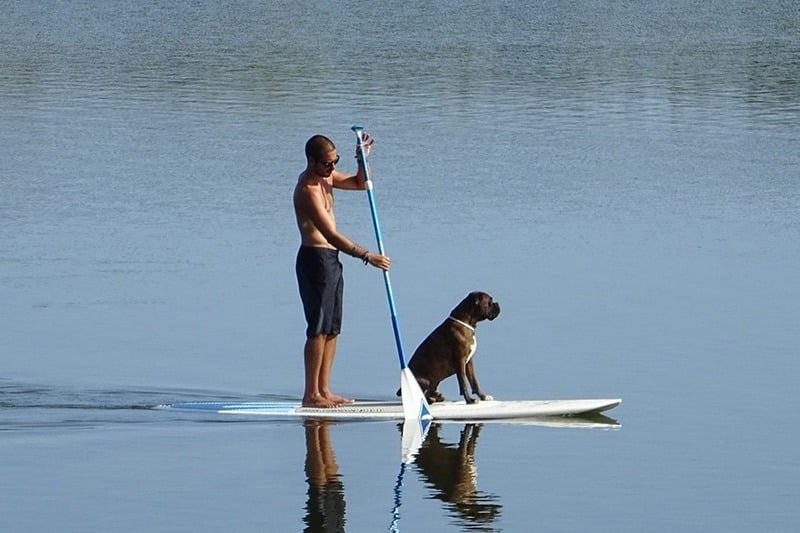

Chunky Chi? Beefy Bulldog? Tubby Terrier……………………….?
Longevity can be related to many factors, weight being an important one to consider.
Establishing if your pet is a good weight can be easily assessed using this body score index set out by the World Small Animal Veterinary Association. 68% of owners believe their pet is an ideal weight but only 12% have looked at the condition chart.
https://www.wsava.org/sites/default/files/Body%20condition%20score%20chart%20dogs.pdf
Achieving a healthy weight for your dog will benefit everybody. A healthy dog means less vet visits and that means less bills. Obesity is linked to many chronic health conditions including arthritis, Diabetes and cancer. Having run health clinics in a veterinary practice many owners can’t believe how much more active and fun their dogs become once they have lost some weight. It’s easy to allow your dog to get into a cycle of becoming unfit and not enjoying exercise due to obesity , in turn they become even less active and put on more weight, arthritis can set in and we often write the dog off as being old and not needing or wanting as many walks. The aim is to grow old healthily not deteriorate during the senior years.
Approaching weight loss with your dog is a familiar story to weight loss for people. Once you have acknowledged that your dog needs to lose weight you are half way there but everybody that the dog spends time with needs to be working with you. You may be working really hard to reduce the weight but it will come to nothing if Great Aunt Doris is sneaking him burgers under the table! Make a pledge as a family to keep your dog healthy and commit to the weight loss.
https://www.pfma.org.uk/_assets/docs/weight-management-tools/pet_pledge.pdf
There are commercial diet foods available, these are often dry highly processed dog foods that are lower in calories than standard diets. This is achieved by increasing the fibre content of the food so the dog feels full but isn’t absorbing calories. A disadvantage of these foods is the amount off faeces produced by the dog will be increased, not to mention a dry highly processed diet is not the healthiest choice for your dog.
Another approach often advised is to reduce the amount of food given, this will reduce the amount of calories consumed by your dog however, living with a hungry dog is not fun. Imagine if we wanted to diet ourselves and decided to reduce our intake by 25%. The diet would not be a success we would be hungry, dissatisfied and very possibly grumpy, your dog will feel the same. This can often result in stealing behaviour and bin raiding much like our own biscuit tin.
A combination of reducing calorie intake, increasing fibre and changing the macronutrient content are keys to success. You can establish how many calories your dog needs per day using this guide, again each dog is individual and this is purely a guide https://www.wsava.org/WSAVA/media/Arpita-and-Emma-editorial/Calorie-Needs-for-Healthy-Adult-Dogs.pdf
Look at the diet you are feeding and compare the fat content to other brands. Fat is twice as calorie dense as protein and whilst they need a healthy level of fat we can avoid excess. An ideal fat content of a raw diet would be 10%. Adding vegetables to the diet will help reduce calories further but your dog will feel fuller, they will also have the added benefits of healthy fresh vegetables. At greens we produce minced seasonal vegetable mix ideal for adding to a raw or cooked diet up to 30% of the daily intake can be vegetables.
Take care of the added extras you give aside form meals. Feeding treats is a lovely way to interact and reward your dog, just make sure the treats are healthy whole foods such as vegetables, fruits or dehydrated meats rather than biscuits.
While we need to adjust the diet of an obese dog we also need to look at their lifestyle. If we compare a domestic dog’s typical day with that of a wolf its closest relative the wolf hunts, roams and plays using up huge amount of calories. During the winter when food is sparse wolves have to work harder to find food. Many domesticated dogs are sedentary for 23 hrs a day at this time of year often with a lead walk around the park. They are using far less calories than their physiology has evolved to consume or even that they might during the summer yet we tend to feed them the same all year round. Increasing the length or pace of the walk will help burn extra calories. Swimming is also a fantastic way to get fit, there are many canine hydrotherapy pools that you can take your dog to improve fitness and have fun.
Greens for healthy pets have a selection of healthier options and can support you through the weight loss journey, make the resolution to look after your pet’s health they don’t get to control their diet but you do.
If you would like to get your pet’s weight why not pop into Green’s & find out how they fare.


By signing up to our newsletter you agree to be sent occassional emails and confirm you have read our privacy policy
VAT Number : UK411024368
Website By Christchurch Web Solutions